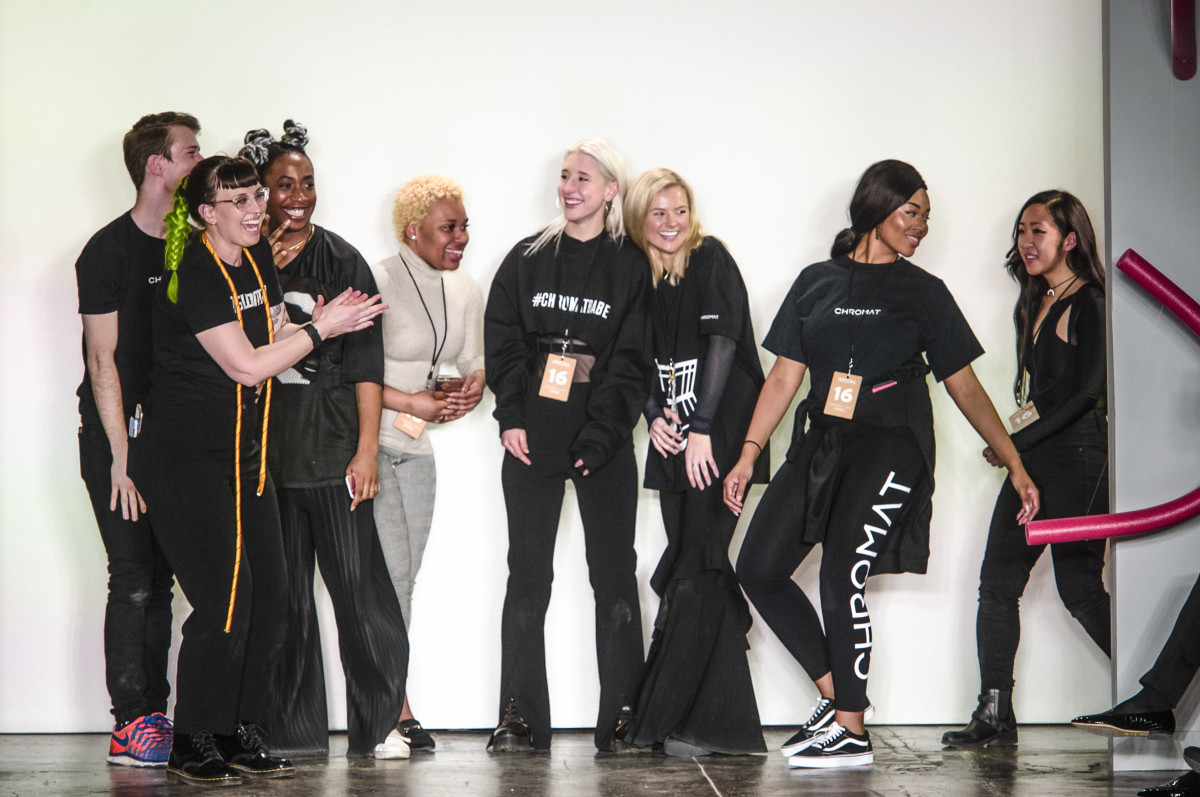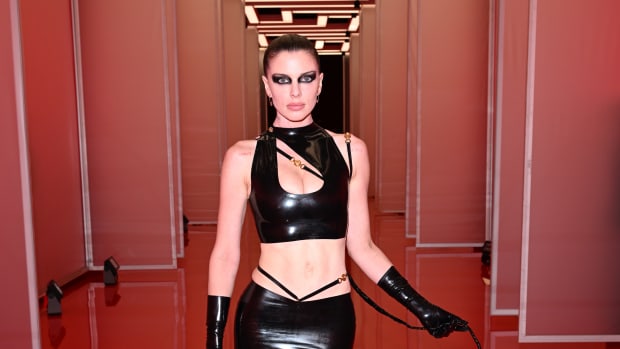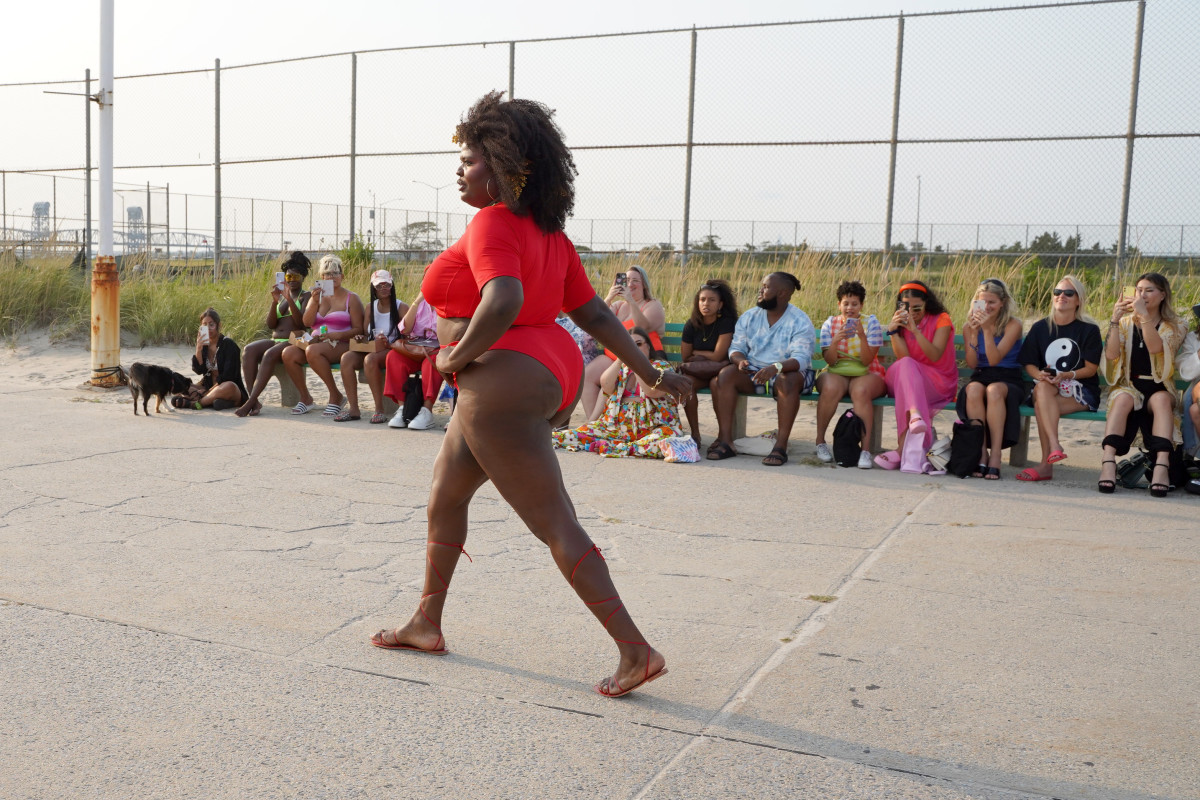Plenty of ink has been spilled, so to speak, about the evolution of fashion criticism in recent years. The premise is that, as social media democratized the industry, fashion media's most
established and respected voices started to lose their gatekeeping power. And, as the internet allowed new fashion collections to be viewed by the public in real time, a new wave of inexperienced but fashion-obsessed voices joined the conversation around them, sharing their unfiltered takes via easily accessible platforms like Twitter, YouTube and TikTok. Meanwhile, legacy publications seemed to grow less, well, critical, in their assessments of designers' work — a phenomenon attributed to a need to keep advertisers happy and, in other cases, a desire to maintain insider status or avoid being banned from big shows.
While they may not be established journalists or even get invited to runway shows, social-media fashion commentators have been heralded precisely for their outsider status and the impartiality it allows. As Samantha Haran, a law-school student behind the account @DECOUTURIZE told us in 2020, "None of us are being paid, so we're free to talk as much shit as we'd like to. You serve a bad collection, we will serve you the critique it deserves."
Despite the common disparagement that they lack the thoroughness and historical understanding of true fashion journalists, these digitally-savvy commentators, who could be students or simply lifelong industry fanatics, are still quite knowledgeable and more representative of the progressive values of younger generations. But they have the option of playing favorites with designers they personally love or dream of working with; and if they build a decent following and decide to push for more access or monetize their platform... Well, we arrive right back at the whole keeping-brands-happy issue.
As fashion criticism evolves and fragments, there's also the question of what it means to the actual subjects of these reviews, hot takes and call-outs: designers.
There was a time when a scathing review could really harm a designer's business (not to mention ego), especially early on in their career. Conversely, there has always been something special about the buzz surrounding a new "industry darling" who enjoys critical success early on. But is that even something designers worry about nowadays? Do today's American fashion stars actually pay attention to the commentary, be it in a newspaper or an Instagram story? And if not from critics, where do they get feedback? Finally, what do the answers to those questions all say about the function of fashion criticism in general?
"I don't believe any designer who says they don't read critiques or reviews," Wes Gordon, creative director of Carolina Herrera, tells Fashionista. "We all work so hard on our collections and are excited, eager and nervous to see people's reactions when we present them. A thoughtful review and critique, whether positive or negative, can be a great opportunity for reflection, introspection and future planning."
"It's always exciting to see how your collection is received after putting months of hard work into it," echoes Markarian's Alexandra O'Neill. "My team and I will read them together after the collection is released."
There wasn't a designer I spoke with who didn't maintain appreciation for the time-honored practice of fashion criticism, from Gordon, who helms an iconic 40-year-old fashion house, to Chromat founder Becca McCharen-Tran, one of the industry's most radical trailblazers.
McCharen-Tran, who always reads Chromat reviews, used to follow the writing of journalists like Teri Agins and Cathy Horyn before she even became a designer, appreciating their ability to tie fashion to something bigger.
"I love to understand the context socio-politically, within the greater world," she says. "As a person who loves to make things, I feel more articulate with my hands, but then to have writers write about how it relates to this or that, how it's going to sell, the history — I'm always blown away."
Designer Willy Chavarria is partial to Guy Trebay and Robin Givhan, he tells me: "They write from a profoundly intellectual perspective, and I respect the way they see the greater purpose of fashion."
Tanya Taylor looks at reviews as a way to gain insight into how the industry — and our world — is evolving. "Aside from reviews on our own collections, I do read the reviews on many other brands and love to see how we interpret the world around us differently," she says. However, she doesn't let the threat of a review inform her design process: "We don't design to get a certain reaction from the critics."
This is a common sentiment. Christian Cowan, for instance, appreciates reviews, but personally no longer reads them, "mainly because I just want to stay on my creative journey and do what I do," he explains. That wasn't always the case, though.
"I think early in my career, I did [take reviews to heart]. A great review would make me elated," he says. "I'm always honored to be written up. I love a conversation and different opinions."
Cowan raises a relevant point: Reviews and public commentary in general can have more of an impact on newer brands, providing valuable feedback and setting the tone for how they're perceived by the industry — especially if said brands are relying on wholesale to drum up business and gain exposure.
"For younger and new brands, they'll find a critic's review extremely important in helping them to get in front of the right retailers," Taylor explains. "It's a seal of industry approval that I feel still holds weight."
"When we were trying to sell our collection to buyers like Nordstrom or whoever, they actually really did care about reviews," McCharen-Tran says. (Chromat's business was once primarily wholesale, but has since switched to direct-to-consumer.) "I think they were led by those gatekeepers or whatever you want to call it, big publications. They were swayed. If we were in Vogue, that actually helped us get these big orders at the stores because it was the same crowd. You have that endorsement."
But as designers grow more confident and established, and maybe even shift their business models (as many do these days), they become less reliant on industry media approval.
"I feel so good about the work of my team that I don't flinch at reviews that don't get it," Chavarria says.
Instead, they may find others to turn to for feedback, or simply look inward. McCharen-Tran, for one, is now more interested in the opinions of her customers and of members of the underserved communities she tries to reach with her inclusive designs and shows. In the lead-up to Chromat's September 2021 New York Fashion Week show featuring swimwear for trans, non-binary and intersex folks — done in collaboration with Tourmaline — her team intentionally reached out to writers and publications who would identify with that community or appreciate its significance. Her favorite "review" was written by one of the models.
"That was really, really special because it goes a little deeper, you know?," she says. "It's like, 'We made it specifically for you, and this is your opinion.'"
Over time, designers also meet people within the industry they can go to for feedback.
Recommended Articles
"I've tuned into some specific individuals who I trust and admire," says Cowan, naming stylist Patti Wilson and Saks Fashion Director Roopal Patel as examples. "Diane von Furstenberg told me to ditch woven and go with stretch. She was so right. It changed our business."
"I ask a lot of people for feedback, but learned early on to know what each person is helpful in knowing and sharing," says Taylor. She advises new designers to "have your people you go to for feedback on business, on prints, on color and silhouette — but ultimately, your instinct is your strongest voice."
For some, the most powerful critics are people who share their DNA.
"My mom's review is always the most important; it's brutally honest," notes Cowan.
"Truthfully, my four-year-old's opinion on fashion matters most to me," adds Taylor. "It puts everything in context when a kid tells you, 'It's too fluffy and looks like Big Bird.'"
All those savage opinions aside, the designers I talked to say they mainly think about their customers while designing. As seasonal collection debuts have become increasingly digital, they have only become a bigger priority.
"We've had entire new categories launch because our customers gave us that feedback through social media," says Taylor. "With our Fall 2022 collection, we decided to approach a social-first rollout during New York Fashion Week so we can get as much feedback from our community."
As the industry and the world changes, designers simply have more control over how they want to craft the messaging around new collections — and who they want to receive it. They're also happy to embrace the industry's newer voices. "Louis Pisano is an icon," Cowan says. Taylor names Vanessa Friedman, Nicole Phelps, Mark Holgate, Robin Givhan, Eva Chen, Katie Sturino, Amy Odell, @hautelemode and Old Rose in Brooklyn on TikTok among her favorite people to read and follow for their takes on fashion, seeing value in both the new and the old guard.
"Everyone is essentially able to formulate their own opinions, as opposed to when no one except editors and buyers were able to see the collections," Taylor argues. "But reviewers bring such a depth of historical knowledge and context to a collection that few people will have, so while we may all have our own opinions, we may still need an informed opinion to validate our own."
If you work in the industry, it's hard not to feel at least a little conflicted about where fashion criticism is going, even while appreciating the fact that social media has amplified more diverse opinions.
"On the one hand, there's sort of a gatekeeper at the top telling people what to think or wear, which can be really hierarchical, but then they're also experts who have devoted their life to researching and understanding these bigger themes," reflects McCharen-Tran. "That's not to say you have to go to school or you have to work at a fancy magazine to have that knowledge... I don't know."
Some designers are even nostalgic for a time when fashion criticism was more direct and severe.
"I do miss the scathing reviews of the '90s and before — a time when critics would tear apart a collection for not being original or relying on the obvious," shares Chavarria. "Most critics today are too timid to share a vibrant opinion."
"When I read your email, the first thing that came to mind is that there's not that much criticism," says McCharen-Tran. "It's mainly like, 'Great job. This is beautiful.'"
Early on, Chromat was enthusiastically celebrated in the press and on social media for being one of the first brands to cast truly diverse models in an authentic way — and rightfully so. But that meant there wasn't much feedback on the actual clothes.
"When I was coming up — and maybe this is also a personal problem I need to work out in therapy — I remember being like, 'Where's the criticism?' Like, tell me what to do better, not just like, 'Yay!'" she remembers.
Wanting to grow and develop as a designer, McCharen-Tran became frustrated that coverage focused on the models and not the garments she and her team had spent months creating. "I love to be creative and I love to make this whole collection around different themes and explore ideas, and sometimes that does get lost in the mix," she says, noting how this observation led to a deeper understanding of the homogeneous casting practices she had been actively challenging. "I think honestly, that's why some designers want the models to all look the same."
All if this isn't to say that the only fashion criticism that matters is the negative kind: Positive feedback can be valuable, too — and not just for the ego.
"Amy Odell wrote recently that our 'clothes are like a bouquet, and not just because that's what they resemble. They're both special and accessible, not an everyday thing, but a treat' — I felt really inspired by how she summed us up and saw what we do in those terms," reflects Taylor.
"The only time I have been affected negatively by a critic is when they have chosen not to write about me," says Chavarria. "Any time I have ever been written about, it has affected my brand positively. That includes reviews that are not so glowing."
Maybe it all goes back to the old adage: "All press is good press." What matters is that designers and new collections continue being discussed. How — and by whom — is less important.
"I think as an art form, fashion will always need and have conversations and criticisms," says Cowan. "Otherwise, what's the point?"
Never miss the latest fashion industry news. Sign up for the Fashionista daily newsletter.






